Urgent warning over ‘nightmarish’ poisonous plant with deadly ‘eyeballs’ spreading across the US
Hikers are being urged to look out for a dangerous ‘nightmarish’ plant that looks like it belongs in a Halloween movie.
The white baneberry plant, known as ‘Doll’s Eye’ because of the berries’ uncanny resemblance to eyeballs, spreads across woodlands and forests during the fall.
It is native to Eastern America, the Midwest and Canada, but will adapt to most growing conditions and can be found in most states across the country.
Experts warn that every part of the plant, from the root to the berries, is extremely poisonous and can cause serious side effects – or even death in extreme cases – if ingested.
The white baneberry plant has pink stems with berries that resemble eyeballs
Forager Alexis Nikole described the berries, which grow on fleshy pink stems, as “complete and total nightmare fuel” in a recent TikTok video.
She said, “The creepiest plant in North America. As if I have to tell you not to eat them, they look like they have a curse on them.
“It seems that if you eat that, your bloodline will be cursed forever and ever,” she added.
The word ‘baneberry’ comes from the Old English words ‘bana’ or ‘bona’, which translates to ‘killer’ or ‘murderer’.He Indiana Native Plant Association explained.
When people eat white baneberries – which grow mainly in forests and swamps – they can experience dizziness, delirium, hallucinations, cardiac arrest and circulatory disorders, it continued.
Other symptoms include gastroenteritis, vomiting, stomach pain, burning sensation in the mouth or throat, headache and convulsions.
Simply touching the plant is usually harmless, but contact can lead to dermatitis in sensitive individuals, the association added.
The berries and roots are the most poisonous parts of the plant.
Eating just six of these bitter-tasting berries can cause serious illness or death, the Indiana Native Plant Society warned. Children are at greater risk of harm than adults.
Its toxicity is linked to a chemical compound called ranunculin.
According to him, ranunculin becomes an irritating oil in the plant Colorado State University.
“The toxicity of a plant can vary depending on the season, the different parts of the plant and the stage of growth,” says the researcher. Lady Bird Johnson Wildflower Center explained.
No deaths or serious illnesses linked to Baneberry have been reported in the U.S., but parks departments, government agencies and botanical experts regularly warn of the danger it poses.
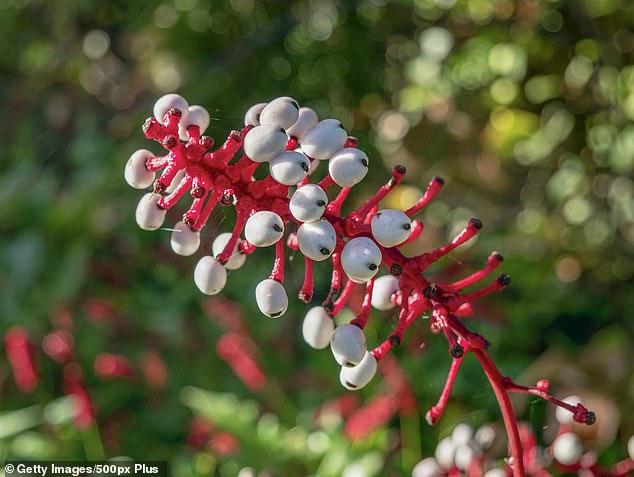
The ‘Doll’s Eye’ plant can cause serious side effects when consumed and can even prove fatal
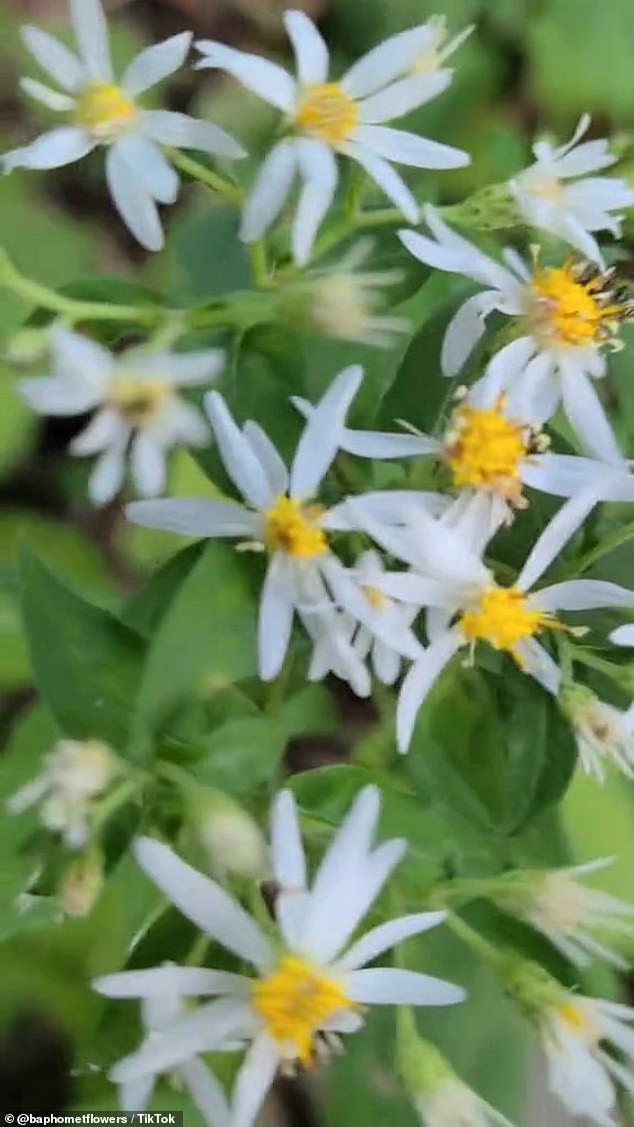
White baneberries bloom from July to October in woodland environments
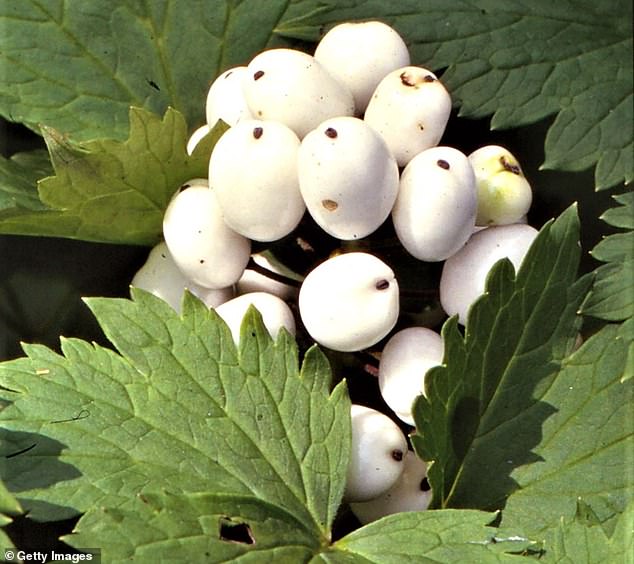
Eating just six berries can be fatal. Experts and government agencies therefore strongly warn about its dangers
The National Park Service warned about the plant on Facebook.
“My toxic trait is that I am toxic,” the message reads.
The agency encouraged people not to eat the fruit of the ‘creepy eyeball aesthetic’ plant.
‘As if the eyeball wasn’t enough, they all have reddish ‘optic nerves’ connecting them. Nightmarish,” one user commented.
Another person said: ‘This plant just screams, “Don’t eat me!” Why any human being would think something so grotesque was palatable is beyond me.”
Someone else added: “What the hell kind of Halloween nightmare is this?”
According to Colorado State University, a Eurasian species of the plant has been linked to the deaths of several children.
“European references have been found of the deaths of children who ate the distinctive red or white berries,” the university said.
The Eurasian Baneberry is native to Western Asia and Eastern European countries. It is also known as ‘Christoffel herb.’
Another related plant is the red baneberry, which grows everywhere in the US except the Southeast Horticulture in Wisconsin. It can also be found in some parts of Mexico.
Baneberries generally bloom from July to October.
The botanical name of the white baneberry plant is Actaea Pachypoda. The red baneberry plant is known as the actaea rubra and the Eurasian variety is called the actaea spicata.
“It’s pretty easy to identify,” a nature lover from Yukon, Canada said of red baneberries. ‘It has large clusters of bright red berries at the end of the stem.’
She added: ‘The leaves are quite unique too, in these groups of three with ragged edges.’
All three species belong to the buttercup family. The red and Eurasian varieties look the same, while the white berries with doll eyes look creepier.
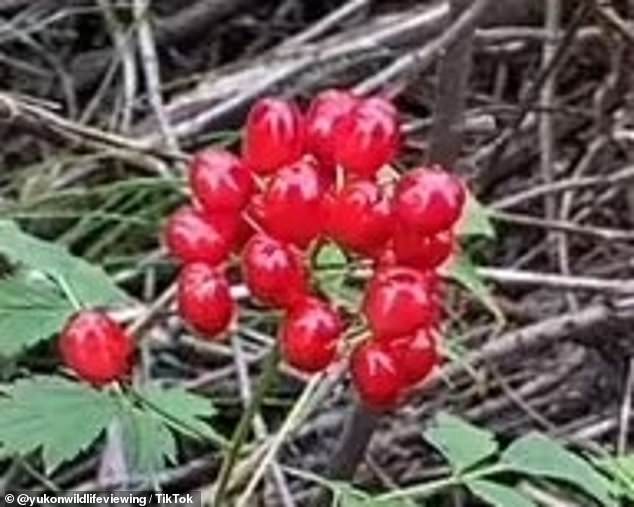
The red baneberry grows everywhere in the US except the southeastern part and is just as deadly as the white baneberry
Another explorer documented their sighting of white baneberry in Upstate New York.
They said in a TikTok: “So my friend pointed out white baneberry. This one right here is the biggest I’ve ever seen.
“That’s crazy, I’ve never seen that before, I’ve never seen anything even half that. But yes, very poisonous, absolutely inedible.’
The white baneberry plant can grow up to a meter high.
Despite baneberries’ toxicity, the plant served medicinal purposes in Native American culture.
Banana berry juice was considered a ‘valuable remedy for snakebites’, according to Botanical.comand was used to make black dice.
According to the researchers, parts of the plant were brewed into a tea and used to treat irregular periods and postpartum pain Medicinal herb information.
It was also used to treat colds and coughs and as a remedy for constipation.
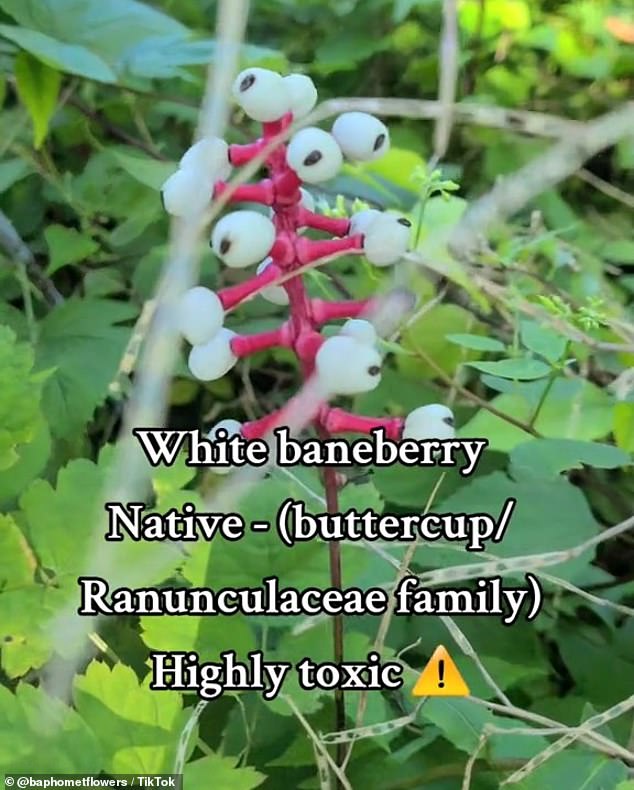
A hiker who encountered the deadly white berries in New York documented their experiences
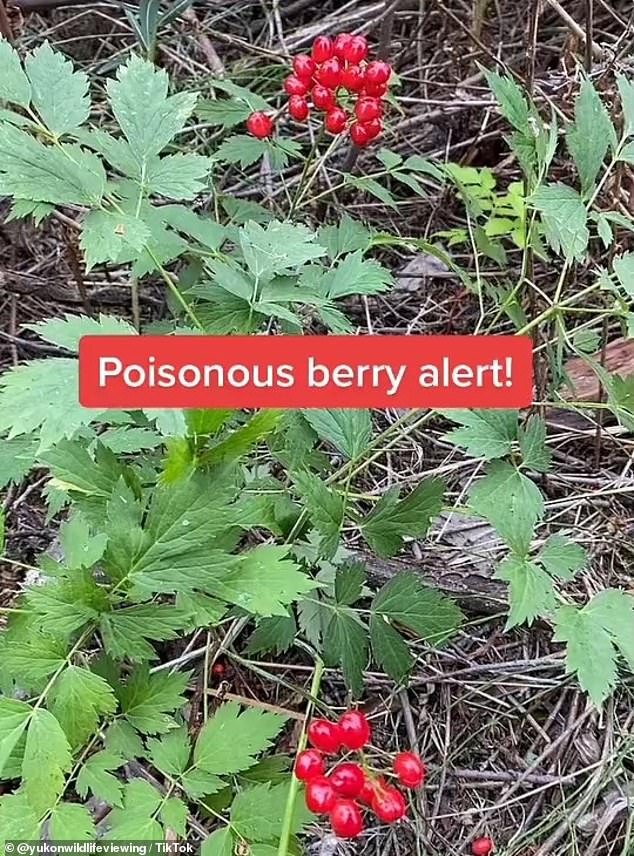
A naturalist spotted red baneberries in Canada and explained their harmful effects
Awkward Botany reported that baneberries are “occasionally browsed by livestock and wildlife, including deer, elk and small mammals,” but the plant provides little to no nutritional value.
According to Colorado State University, cows and horses can be poisoned by baneberries.
Dogs and cats should not eat them either. The berries can irritate their mouths and, if eaten in large quantities, cause kidney damage, according to the Pet Poison Helpline. But birds don’t seem to be bothered by it.
